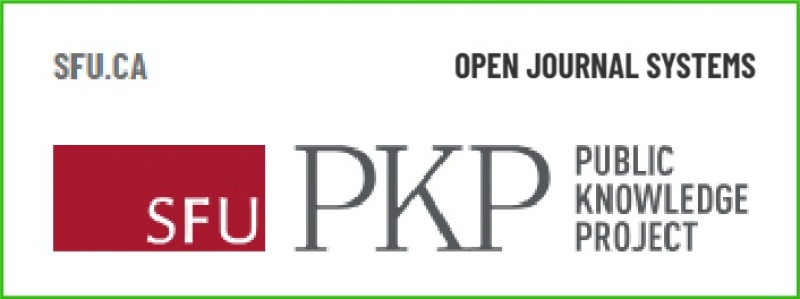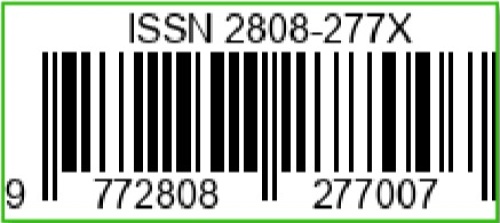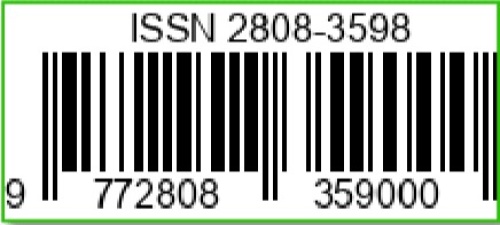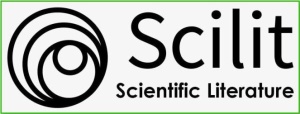Identifikasi Tumbuhan sebagai Repellent terhadap Nyamuk : Review
DOI:
https://doi.org/10.36312/biocaster.v4i1.245Keywords:
Identification, Plants, Anti-mosquito, Repellent.Abstract
Indonesia as one of the tropical countries in the world with high air humidity triggers the breeding of mosquitoes such as Aedes aegypti which is one of the vectors of Dengue Hemorrhagic Fever (DHF). This type of research is a literature study using the literature review method. This method is carried out by evaluating, interpreting and explaining the ideas discussed in several studies by searching for sources from the Google Scholar database. The selection of the type of article is based on the year of publication, the article can be accessed in its entirety, and discusses plants as repellents against mosquitoes. Based on research results from several sources, there is a biological prospect as an anti-mosquito agent for anti-mosquito and repellent/repelling power because it contains bioactive compounds, such as alkaloids, saponins, flavonoids, phenols, tannins, steroids and terpenoids. These compounds enter through respiratory contact and digestive/gastric toxins so that mosquitoes experience mortality/death. This compound also blocks chemical receptors (chemoreceptors) found on the palpus and antennae of mosquitoes, so that mosquitoes escape without sucking blood again. It is hoped that this review article can provide information regarding repellent plants as anti-mosquitoes. It can be concluded from the results of the review that there are plants that have repellent power against Aedes aegypti with increased protective power according to the increase in concentration of the plant used, as well as the length of exposure of the extract from each plant to the skin.
Downloads
References
Aulia, N., Hamzah, B., & Ningsih, P. (2019). Uji Efek Ekstrak Daun Kemangi (Ocimum sanctum Linn) sebagai Anti Nyamuk Elektrik terhadap Nyamuk Aedes aegypti. J. Akad Kim., 8(2), 78-81. https://doi.org/10.22487/j24775185.2019.v8.i2.2750
Chatri, M., Mansyurdin., Bakhtiar, A., & Adnadi, P. (2017). Perbandingan Komponen Minyak Atsiri antara Daun Muda dan Daun Dewasa pada Hyptis suaveolens (L.) Poit. Eksakta : Berkala Ilmiah Bidang MIPA, 18(2), 1-12. https://doi.org/10.24036/eksakta/vol18-iss02/41
Da Rocha, J. L. C., De Tripodi Calumby, R. F. A., Da Silva, D. F., Brandão, H. N., Villarreal, C. F., & De Lima, F. O. (2019). Evaluation of Biological Activity of Polygala boliviensis in Experimental Models. J. Pharm. Res., 18(2), 793-802. https://doi.org/10.22037/ijpr.2019.1100655
Fahrisal., Pinaria, B., & Tarore, D. (2019). Penyebaran Populasi Nyamuk Aedes aegypti sebagai Vektor Penyakit Demam Berdarah Dengue di Kota Tidore Kepulauan. Jurnal Bios Logos, 9(1), 28-33. https://doi.org/10.35799/jbl.9.1.2019.23420
Fiana, N., & Oktaria, D. (2016). Pengaruh Kandungan Saponin dalam Daging Buah Mahkota Dewa (Phaleria macrocarpa) terhadap Penurunan Kadar Glukosa Darah. Medical Journal of Lampung University, 5(4), 128-132.
Halim, R., & Fitri, A. (2020). Aktivitas Minyak Sereh Wangi sebagai Anti Nyamuk. Jurnal Kesmas Jambi, 4(1), 28-34. https://doi.org/10.22437/jkmj.v4i1.8940
Herdiana, Y., Ferdiansyah, F., & Runadi, D. (2022). Pemanfaatan Selasih dan Serai sebagai Antinyamuk Demam Berdarah Herbal di Desa Cinunuk, Kabupaten Bandung. Dharmakarya : Jurnal Aplikasi Ipteks untuk Masyarakat, 11(1), 26-28. https://doi.org/10.24198/dharmakarya.v11i1.21132
Jannah, H., & Safnowandi. (2018). Identifikasi Jenis Tumbuhan Obat di Kawasan Desa Batu Mekar Kecamatan Lingsar Kabupaten Lombok Barat. Bioscientist : Jurnal Ilmiah Biologi, 6(1), 1-15. https://doi.org/10.33394/bioscientist.v6i1.938
Kurniawati, I. F., & Sutoyo, S. (2021). Review Artikel : Potensi Bunga Tanaman Sukun (Artocarpus altilis [Park. I] Fosberg) sebagai Bahan Antioksidan Alami. UNESA Journal of Chemistry, 10(1), 1-11. https://doi.org/10.26740/ujc.v10n1.p1-11
Laksono, F. W., Sari, N. L. S., Salsabila., & Kurniasari, L. (2022). Pengaruh Insektisida Alami Ekstrak Daun Jelatang terhadap Mortalitas Larva Aedes aegypti. In Prosiding Seminar Nasional Sains dan Teknologi (pp. 1-8). Semarang, Indonesia: Fakultas Teknik, Universitas Wahid Hasyim.
Lesmana, O., & Halim, R. (2020). Gambaran Tingkat Kepadatan Jentik Nyamuk Aedes aegypti di Kelurahan Kenali Asam Bawah Kota Jambi. Jurnal Kesmas Jambi (JKMJ), 4(2), 59-69. https://doi.org/10.22437/jkmj.v4i2.10571
Lestari, Y., Nukmal, N., & Soekardi, H. (2014). Potensi Ekstrak Daun Cengkeh (Syzygum aromaticum L.) dalam Bentuk Lotion sebagai Zat Penolak terhadap Nyamuk Aedes aegypti. In Prosiding Seminar Nasional Pengembangan Teknologi Pertanian (pp. 271-277). Lampung, Indonesia: Politeknik Negeri Lampung.
Nikoyan, A., Malik, N., Amirullah., Buana, T., Batoa, H., & Mardin. (2023). Pemanfaatan Ekstrak Daun Kemangi (Ocimum basilicum) dalam Pengendalian Larva Nyamuk Aedes aegypti. Jurnal Pengembangan Inovasi dan Pembangunan Masyarakat, 1(1), 6-11. https://doi.org/10.56189/jpipm.v1i1.8
Pragnanda, S. H., Nugroho, T., & Inakawati, S. (2017). Efek DLBS1425 Topikal Berbagai Konsentrasi terhadap Ekspresi COX-2 Kornea Tikus Wistar Pasca Trauma Basa. Media Medika Muda, 2(3), 157-163.
Silalahi, L. (2014). Demam Berdarah (Penyebaran dan Penanggulangan). Jakarta: Litbang Departemen Kesehatan Republik Indonesia.
Suluvoy, J. K., Sakthivel, K. M., Guruvayoorappan, C., & Grace, B. V. M. (2017). Protective Effect of Averrhoa bilimbi L. Fruit Extract on Ulcerative Colitis in Wistar Rats Via Regulation of Inflammatory Mediators and Cytokines. Biomedicine & Pharmacotherapy, 91(28531922), 1113-1121. https://doi.org/10.1016/j.biopha.2017.05.057
Trovancia, G., Sorisi, A., & Tuda, J. S. B. (2016). Deteksi Transmisi Virus Dengue pada Nyamuk Wild Aedes aegypti Betina di Kota Manado. Jurnal e-Biomedik (eBm), 4(2), 1-5. https://doi.org/10.35790/ebm.v4i2.14661
Ulhaq, Z. S., & Rahmayanti, M. (2020). Panduan Penulisan Skripsi Literatur Review. Malang: Universitas Islam Negeri Maulana Malik Ibrahim Malang.
Wahyuni, D., Sari, N. P., Jasril, J., & Syahri, J. (2022). Bio-insecticide’s Extract of Scented Root (Polygala paniculata) in Controlling the Mosquito Aedes aegypti (L.). Makara Journal of Science, 26(2), 107-113. https://doi.org/10.7454/mss.v26i2.1303
Zen, S., & Asih, T. (2017). Potensi Ekstrak Bunga Tahi Kotok (Tagetes erecta) sebagai Repellent terhadap Nyamuk Aedes aegypti yang Aman dan Ramah Lingkungan. Bioedukasi : Jurnal Pendidikan Biologi, 8(2), 142-149. http://dx.doi.org/10.24127/bioedukasi.v8i2.1072

Downloads
Published
How to Cite
Issue
Section
License
Copyright (c) 2024 Sri Wahyuni Budi Lestari

This work is licensed under a Creative Commons Attribution-ShareAlike 4.0 International License.
-
Attribution — You must give appropriate credit, provide a link to the license, and indicate if changes were made. You may do so in any reasonable manner, but not in any way that suggests the licensor endorses you or your use.
-
ShareAlike — If you remix, transform, or build upon the material, you must distribute your contributions under the same license as the original.









































